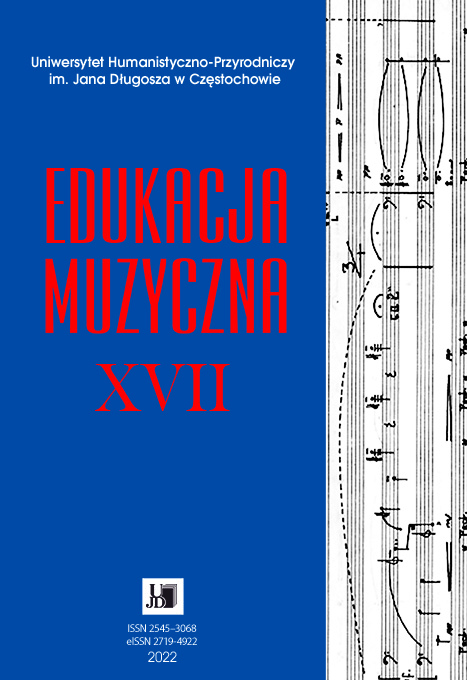The English guitar and the forgotten guitar repertoire of the second half of the 18th century
The English guitar and the forgotten guitar repertoire of the second half of the 18th century
Author(s): Małgorzata ŻEGLEŃ-WŁODARCZYKSubject(s): Music
Published by: Uniwersytet Jana Długosza w Częstochowie
Keywords: English guitar; guittar; guitar repertoire of the second half of the 18th century; English guitar design; guitar makers;
Summary/Abstract: The time leading up to one of the most important periods in the history of guitar music – “the golden age of the guitar” in the first half of the 19th century – was the heyday of European cities such as London, Paris, Vienna or Dresden. Music was the main source of entertainment for royalty and high society, and numerous music publications, sheet music editions and instrument handbooks were being created. Manufactures tried to outdo each other in structural innovations, refining and patenting increasingly interesting instruments. One such instrument was the immensely popular English guitar (guittar), which differed in design and tuning from the instrument we know today.At present, it would be futile to look for the guitar repertoire of the second half of the 18th century on concert stages or in academic curricula (with a few exceptions, such as Luigi Boccherini's quintets or Giuseppe Antonio Brescianello's partitas), and English music is almost nowhere to be found. It is, to a large extent, undiscovered and nearly forgotten. Bringing it back to life will not only provide insight into the design and performing capabilities of the now unknown guittar (as well as its distinctive playing technique, fingering and articulation) and allow us to learn more about the works composed for the instrument (and their characteristic features), but – above all – give a full picture of the evolving aesthetics of the 18th century. These compositions will also fill the existing gap in the guitar repertoire of the second half of the 18th century, offering broad prospects for their performance in the future. The most important consequence of that is the preservation of the continuity of guitar literature from the Renaissance to the present day, and the resulting possibility to make the world described in Leopold Mozart’s or Carl Philipp Emanuel Bach’s treatises tangible.
Journal: Edukacja Muzyczna
- Issue Year: 2022
- Issue No: 17
- Page Range: 139-155
- Page Count: 17
- Language: English

